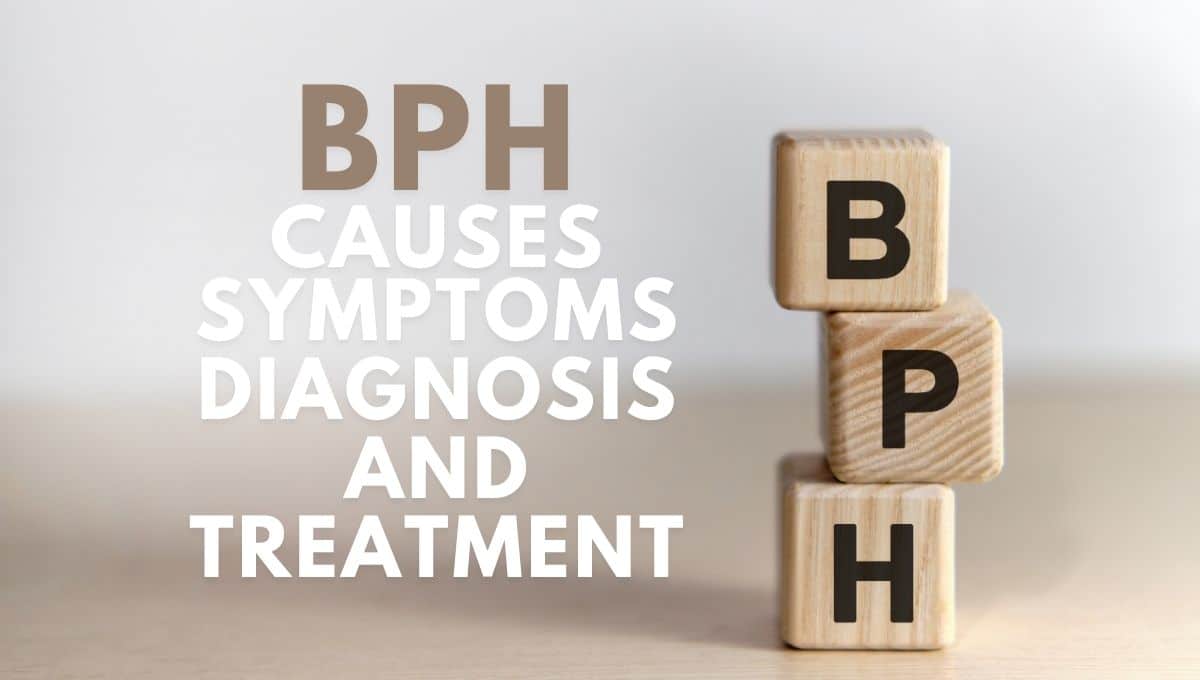Transforming Urological Care: Discover How Advanced Urology Institute Leads the Revolution! Innovations & Patient-Centered Excellence
Continue readingWhat Do Your PSA Test Levels Really Mean?
Understand and be aware of what your PSA Test Levels Really Mean with Advanced Urology Institute. Don’t miss this eye-opening information.
Continue readingPractical Tips to Manage Prostate Enlargement Better
Having BPH can be very uncomfortable, AUI will show you these practical tips to manage prostate enlargement better.
Continue readingUnderstanding the Root Causes of an Enlarged Prostate
Enlarged prostate, or benign prostatic hyperplasia, is a common condition experienced by men over the age of 45. While the exact cause of BPH is unknown, it is linked to age-related factors, genetics and certain medications.
Continue readingDon’t Let an Enlarged Prostate Go Undetected: Recognizing the Symptoms
Enlarged prostate, medically known as benign prostatic hyperplasia (BPH), is a common condition among men over the age of 50 in which the prostate grows larger than normal. It’s essential to understand the causes and symptoms of an enlarged prostate in order to take the necessary steps to diagnose and treat the problem.
Continue readingProstate Enlargement and Prostate Cancer: Is there a Connection?
Prostate enlargement neither causes nor turns into prostate cancer, and is a completely separate condition. In fact, the risk of prostate cancer is lower in men with an enlarged prostate than in men without the condition. However, the two conditions are linked in various ways. Here are four ways in which BPH and prostate cancer are connected
Continue readingEarly detection of prostate problems
After a Diagnosis of Prostate Cancer
My name is Amar J. Raval and I’m with Advanced Urology Institute. If you’re young and you have newly diagnosed prostate cancer, I’m definitely more aggressive in that regard offering treatment options whether it’s a radical prostatectomy or any
Continue readingWhat Causes BPH, and How is it Diagnosed & Treated by Dr. David Harris?
Risk Factors of Prostate Cancer
 For many men, their prostate cancer will not be aggressive and the symptoms will be manageable. In these cases, urologists rely on active surveillance as the best first treatment option. Rather than risk possibly harmful treatments on a non-aggressive cancer, the urologist will monitor the cancer with routine checkups. Other treatment options will be considered if the cancer becomes more aggressive.
For many men, their prostate cancer will not be aggressive and the symptoms will be manageable. In these cases, urologists rely on active surveillance as the best first treatment option. Rather than risk possibly harmful treatments on a non-aggressive cancer, the urologist will monitor the cancer with routine checkups. Other treatment options will be considered if the cancer becomes more aggressive.
If the prostate cancer is aggressive and immediate treatment is needed, urologists and their patients have a wide range of treatment options to choose from. The treatment option that works best will depend on a number of factors such as the cancer’s size and growth, and the patient’s age and health. Surgery to reduce the size of the cancer is often preferred for slow growing cancers. For more aggressive cancers, urologists may choose chemotherapy or radiation to kill the cancer cells as quickly as possible.
Although there are many possible causes of prostate cancer, there are certain factors that are known to raise the risk of its occurance. The first risk factor is age. As men get older, their likelihood of developing prostate cancer increases. African-American men have a greater genetic risk for developing an aggressive prostate cancer, while family history and obesity are also factors.
Early detection is the key to a successful treatment. Because prostate cancer is age related, it is recommended to most men that they begin having annual prostate checkups at age 50. African-American men and those with a family history of this cancer should be checked annually starting at age 40. Life saving screenings and successful treatments of prostate cancer happen every day at the Advanced Urology Institute, where trusted urologists like Brian C. Hale, MD guide their patients from diagnosis to recovery.
Recent Advances in Prostate Cancer Treatment
Prostate cancer is cancer of the gland that produces seminal fluid for the nourishment of sperm. Some cases are slow developing and do not affect the patient significantly. These can be managed by watchful waiting and constant monitoring. Others are aggressive and must be addressed immediately. As with most cancers, early diagnosis increases the chances of successful treatment.
Developments in the treatment of prostate cancer
1. Multiparametric MRI (MpMRI) in diagnosis
Determining which cancer is life threatening and which one is not is a critical issue. In order to carry out a more efficient diagnosis, doctors now are using an MRI guided biopsy instead of the more traditional transrectal ultrasound guided biopsy. The MpMRI provides better results determining if the prostate is infected and if the cancer has spread outside the prostate. It can help a doctor decide whether or not a patient should undergo a biopsy. And the MpMRI can be used to monitor the cancer growth, making it a very useful tool when watchful waiting is adopted.
2. Use of immunotherapy in treatment
Until recently, it was thought that immunotherapy was ineffective against prostate cancer. Prostate cancer treatment was primarily limited to surgery, hormone therapy and radiotherapy. In recent years, however, researchers have found that immunotherapy, specifically a drug called pembrolizumab, may be effective in treating aggressive cases of prostate cancer that have advanced beyond the other forms of treatment.
3. Robotic surgery
Like most other areas of surgery, the treatment of prostate cancer has benefited from the use of robotic or the da vinci surgical system that is guided by a surgeon operating from a console. Patients who undergo prostatectomy to remove the prostate may avoid open surgery by opting for robotic surgery. Benefits of robotic surgery include reduced bleeding, reduced pain, low risk of post surgery infections and fast recovery rates.
Medical advancements have improved cancer treatment outcomes and changed lives for the better. At Advanced Urology Institute, the team of specialists uses the latest techniques and technology for treating prostate cancer. They are available to offer consultation, diagnosis and treatment best suited for the individual patient.
For more information, visit the Advanced Urology Institute website.
2 Effective Treatment Options for Prostate Cancer
Prostate cancer can be treated and managed in a number of ways. While the preference of the patient is given priority, it should be tempered with the advice of a trained urologist. A urologist can offer advice on what method is appropriate depending on the age of the patient, the patient’s family history and the natural progression of the disease. The patient also needs to be fully advised of the side effects of any form of treatment before agreeing to undergo the treatment. For any given case of prostate cancer, there are always at least two treatment options available.
1. Surgery
A patient with prostate cancer can choose to have the prostate surgically removed to clear the cancer from the body. The procedure is known as Radical Prostatectomy. It is most appropriate in cases where the cancer is localized and has not spread beyond the prostate. However, even when the cancer is localized, a urologist will determine the progression of the disease before recommending surgery. Low risk localized prostate cancer is unlikely to progress and a radical prostatectomy is unnecessary. On the other hand, when the cancer is aggressive and is likely to result in death if untreated, surgery is definitely the most appropriate choice.
Radical prostatectomy is recommended for patients under the age of 75 , or those with a life expectancy of at least ten years. This is because they are more likely to preserve their sexual and urinary functions after the surgery and they have a stronger chance of outliving any side effects the surgery might have.
2. Radiation Therapy
Radiation therapy, or radiotherapy is the use of radiation in high doses to kill malignant cancer cells or slow their development. Unlike radical prostatectomy, it can be used to treat localized prostate cancer and even advanced prostate cancer. It may be applied in combination with other treatment options such as hormone therapy. It may even be applied if a patient undergoes a radical prostatectomy but the procedure fails to eliminate the cancer fully or if the cancer recurs.
Radiation therapy can be administered externally or internally. When done externally, it is referred to as external beam radiation and is very much like having an X-ray. When administered internally, it is referred to as brachytherapy or internal radiation therapy. In this procedure, a radiation implant is placed inside the body near the affected organ. After a while, the implant ceases to produce radiation. The implant, however, remains in the body.
Both radical prostatectomy and radiation therapy are suitable treatment options and choosing between them may seem a little daunting. The professional opinion of a urologist can help by pointing out the finer points of each choice. The patient also may research the subject by reading up on the various options. There are many sites that offer reliable material on this subject.
For more information about treatment options for prostate cancer, visit the “Advanced Urology Institute” website.
Prostate Problem Warning Signs
At Advanced Urology Institute, we frequently see first-time visitors with symptoms of advanced stage prostate problems. For us, that is quite heartbreaking because it means the patients come too late, when only limited treatment options are available for their conditions.
As urologists, we always want the best for our patients. We want to see them leave when they can pee better and are free from the embarrassment of accidental urine leaks. And because early detection and treatment of prostate problems — whether prostate cancer or non-cancerous condition — improve the chances of cure and of long-term survival, we always encourage men to be more mindful of their bodies, especially when it comes to their urinary function and habits. By doing that, they are able to detect warning signs of prostate issues early and can seek treatment.
Warnings signs of prostate problems include:
- Frequent urination or frequent urge to pass urine.
- Passing urine more often than usual, particularly at night.
- Pain, discomfort or burning sensation when passing urine.
- Dribbling urine
- Weak or interrupted urine streams.
- Accidental urine leakage.
- Blood in urine or semen
- Frequent stiffness or pain in your lower back, rectal area, hips, upper thighs or pelvic area.
- Difficulty or inability to urinate
- Trouble with starting or stopping your urine stream.
- Painful ejaculation
- A feeling that you aren’t able to empty your bladder completely.
- Swelling of lower extremities.
- Paralysis or weakness in lower limbs.
- Inability to pass urine while standing up.
- Loss of appetite and weight, fatigue, nausea and vomiting.
It is important to see a urologist immediately if:
- You find urination difficult, abnormal or painful. The doctor will examine your prostate gland to find out if it is inflamed, enlarged or has a cancer.
- You have frequent urination, urinary retention, blood in urine, dribbling or slow flow of urine, problems starting a urine stream, or repeatedly urinate urgently.
- You have a chronic pain in your pelvic, lower back, upper thigh or other areas of your lower extremities. While any unexplained ongoing pain in these areas may have various causes and always merits medical attention, seeing a urologist may help detect whether or not you have prostate cancer.
- You have swollen legs, weakness in your legs or trouble walking.
- You have unexplained weight loss.
As urologists, we have several options for tackling prostate problems, but our interventions normally depend on the severity of the symptoms, type of condition and how it is impacting your overall quality of life. For example, if the prostate condition is not severely affecting your quality of life and you have no complications (such as bleeding, bladder stones or urinary infections), the decision to treat the problem is often optional and left for you to make.
That means if you aren’t bothered enough to undergo a procedure or take medicine for the condition, then you’ll only need frequent follow-up with your urologist to check whether your symptoms remain stable over time and your bladder continues to empty well. But if you already have complications or your bladder is holding increased quantities of residual urine after urination, then we often begin treatment immediately.
To help you pass urine better, we may offer medications such as alpha blockers, 5-alpha reductase inhibitors or a combination of drugs. But minimally invasive surgical procedures such as TUMT (transurethral microwave thermotherapy) and TUNA (transurethral needle ablation), water-induced thermotherapy, PVP (photoselective vaporization of prostate), and HoLAP (holmium laser ablation of prostate) also may be considered. For more information on diagnosis and treatment of prostate problems, visit the “Advanced Urology Institute” site.
How Is Prostate Cancer Treated
After a diagnosis of prostate cancer, there are several treatment options you may want to consider. However, there is no single option that is right for all men with prostate cancer. Some prostate tumors grow very slowly or don’t grow at all, so you may never even need treatment if you have such a tumor. Then there are tumors that grow rapidly and spread quickly to different areas of the body. Either way, you should work with your doctor to decide what is best for you. As you discuss your treatment with your cancer care team, it is important that you weigh the benefits of every option against the possible side effects and risks.
The factors to consider when choosing treatment for prostate cancer include:
- Stage of your cancer (how far it has spread).
- Severity of the tumor (how large in size and how serious the symptoms are).
- How quickly the cancer is growing or spreading.
- Your age, state of health, lifestyle and expected lifespan.
- Any other serious conditions you may have.
- What every treatment involves.
- Possible side effects of the treatments.
- The possibility that the treatment will cure the tumor or help in some way.
- How the treatment chosen may affect other treatment options later should the cancer recur or spread.
- Your personal feelings about each treatment option.
- Practical issues such as nearness to hospital.
The most common treatments for prostate cancer include:
1. Active surveillance
The doctor keeps an eye on the cancer to make sure it can be treated should it begin to spread or grow aggressively. This option is appropriate if you have a small, localized, slow-growing tumor. The doctor will wait until symptoms appear in order to begin treatment. During active surveillance, the progress of the tumor is monitored through regular PSA blood tests, ultrasounds, rectal exams and biopsies. The tests help to check whether the cancer is getting worse so appropriate treatment can be administered as soon as it begins to grow or spread.
2. Radiation therapy
Radiation is aimed at the cancer to destroy the cells and treat the tumor. Image-guided radiotherapy ensures that prostate cancer can be treated with minimal effect on healthy cells. However, radiation therapy is still often considered more ideal for older men and those who have other serious health problems and less so for younger men. You also may undergo radiotherapy after surgery to help get rid of any cancer cells that remain behind or to treat cancer that has reached the bones. There are two forms of radiotherapy: external beam radiotherapy that is applied by a machine placed outside the body and internal radiotherapy (brachytherapy) that involves inserting small radioactive “seeds” into the body either near or into the cancer.
3. Surgery
If you are healthy and have a localized cancer, you may choose to have an operation to remove the prostate gland or to remove the gland and surrounding tissue. But surgery for prostate cancer is often associated with problems getting an erection and controlling urine, so you should speak with your urologist before the procedure to find out if measures are in place to protect your nerves and minimize such effects.
4. Hormone therapy
Prostate cancer cells require the hormone testosterone to keep growing. Hormone therapy, also called androgen deprivation therapy, is when the urologist applies treatment to ensure the cancer cells can’t get the hormone. The treatment either may lower the body levels of testosterone and other male hormones or block the way testosterone works.
5. Chemotherapy
Your urologist may prescribe drugs to kill prostate cancer cells or shrink the prostate. The drugs can be taken orally or may be injected directly into your bloodstream. Generally chemotherapy isn’t given for men with early-stage prostate cancer. But when the cancer is advanced or has spread to other areas of the body, then chemotherapy may be ideal. Apart from using drugs, the urologist may give the prostate cancer vaccine to boost your immune system in order to fight the cancer cells. The vaccine is often given to men who haven’t been successful with hormone therapy and it can help you live longer.
Surgery vs. radiotherapy: Which one is ideal for you?
While some men with low-risk localized prostate cancer and some with medium-risk cancer may find watchful waiting (active surveillance) appropriate, others with localized cancer may want to begin treatment right away. And in that case, either radiation therapy or surgery may be the suitable treatment.
Both radiation therapy and surgery work well for localized prostate tumors, limiting the possibility of the cancer spreading outside the prostate. Both treatments have side effects too, including bowel, bladder and erection problems. With radiation therapy, you are more likely to have bowel problems. But with surgery, you are more likely to have erection problems or leaking of urine. So the choice you make between radiation therapy and surgery should primarily depend on your treatment goals.
For example, if the goal is to treat the cancer by removing the prostate, then surgery is the proper treatment. Of course, there are men who just want to get the cancer out and they wouldn’t mind removal of the prostate too. Then there are some who want to avoid radiation so surgery suits them well. If the goal is treating cancer while also avoiding the risks associated with a major surgery, then radiation therapy is the ideal choice. Having radiation instead of surgery also will help to avoid erection problems and preserve your sexual function.
One form of treatment may be more appropriate for you than the other because of how you feel about it, other health problems you have and your life expectancy. For instance, young men do well after surgery while older men tend to respond well to radiotherapy. That is why you should discuss your options with your doctor before you make a decision.
Treating advanced-stage prostate cancer
For advanced prostate cancer — a cancer that has spread beyond the prostate and into other parts of the body — treatment may not cure the cancer, but will keep it in check and relieve symptoms. The treatment options for advanced prostate cancer include hormone therapy, chemotherapy plus hormone therapy and prostate cancer vaccine. Usually, hormone therapy is given for advanced-stage prostate cancer to help keep the cancer under control. But if after some time the cancer begins to grow again, other treatments may be administered along with the hormone therapy to control the cancer and alleviate the symptoms, though the hormone therapy regime is kept because it ensures that your testosterone level is low.
With prostate cancer, there is no perfect treatment for every patient. All definitive treatments come with side effects, which tend to vary depending on the patient and the actual treatment. As urologists, we are always endeavoring to minimize these effects by picking the appropriate treatment for each patient. We make sure that the treatment can effectively eliminate the cancer while also preserving the patient’s quality of life during and after therapy. For further information on treatment of prostate cancer, visit the “Advanced Urology Institute” site.
Options for Treating Benign Prostatic Hyperplasia
The prostate is a tiny gland situated between the bladder and the penis. But as men get older, the gland grows larger, putting pressure on the urethra and bladder and causing urinary problems. An enlarged prostate is medically called benign prostatic hyperplasia (or BPH), a condition that’s quite common in older men. In the U.S. around 50 percent of men 51-60 years old have BPH while up to 90 percent of men over age 80 are affected by the condition.
The common symptoms of an enlarged prostate are:
- Inability to delay urination.
- Urge to urinate more than 8 times a day.
- Frequently waking up at night to pass urine.
- Dribbling after urinating.
- Urinary incontinence (urinating accidentally).
- Inability to completely empty the bladder (urinary retention).
- Having intermittent or weak urine stream.
- Straining to pass urine or difficulty starting urination.
So what are the options for treating BPH?
As urologists, the first thing we do when a patient has symptoms is to rule out other possible problems. We talk with our patients to learn the nature and severity of their symptoms, conduct exams, do ultrasound and relevant tests. Once it’s confirmed that it is BPH, we begin treatment starting with the least invasive procedures. Treatment options for BPH include medication, minimally invasive procedures and surgery, although various lifestyle changes also can improve or prevent symptoms.
1. Medications
The urologist may recommend medication to help control prostatic growth and reduce symptoms. For instance, alpha blockers such as alfuzosin (Uroxatral), silodosin (Rapaflo), doxazosin (Cardura), tamsulosin (Flomax) and terazosin (Hytrin) may be used to relax prostate muscles and make it easier to urinate. They quickly increase urine flow and reduce the need to urinate frequently. Another type of medication that may be prescribed is 5-alpha-reductase inhibitors, such as finasteride (Proscar) and dutasteride (Avodart), which limit the growth of the prostate by blocking hormones that promote growth of the gland. It generally takes 3-6 months for 5-alpha reductase inhibitors to relieve symptoms.
Phosphodiesterase-5 (PDE5) inhibitors such as Sildenafil, (Viagra), Tadalfil (Cialis) and Vardenafil (Levitra) may be given to help relax urinary tract muscles and relieve BPH symptoms. However, in some cases, particularly when either a 5-alpha reductase inhibitor or an alpha blocker isn’t effective on its own, urologists may give a combination therapy. This typically involves a combination of a 5-alpha reductase inhibitor and an alpha blocker and usually results in greater symptom relief.
2. Minimally invasive procedures
When medications fail to relieve BPH symptoms, the next step in treatment usually involves minimally invasive interventions. During the procedure, a urologist inserts an instrument into the rectum or urethra to either widen the urethra or destroy excess prostate tissue. For instance, TUMT (Transurethral Microwave Thermotherapy) uses microwaves to heat and destroy excess prostate tissue. TUMT does not cure BPH but makes it easier to pass urine, cuts down urinary frequency and reduces weak flow. Another treatment, TUNA (Transurethral Needle Ablation), uses high-frequency radio waves that are delivered via twin needles to burn a specific area of the prostate. TUNA is an outpatient procedure that relieves BPH symptoms and improves urine flow.
A third minimally invasive option for BPH is water-induced thermotherapy. During the treatment, hot water delivered through a catheter and into a treatment balloon located at the center of the prostate is used to heat up a definite area of the prostate and destroy problematic tissue. Once destroyed, the excess tissue is either reabsorbed in the body or excreted through urine. Another minimally invasive treatment option is the Urolift procedure, which involves inserting small implants into the prostate to retract, hold and lift the enlarged prostate tissue, opening up the passage for urine and relieving bladder blockage. While the Urolift procedure does not involve heating, cutting or removing the excess prostate tissue, it is effective in restoring normal flow of urine and relieving symptoms, and patients usually return home the same day without a catheter.
A revolutionary minimally invasive procedure for treating BPH is the Rezum system. During the treatment, sterile water vapor is injected into the prostate to help destroy overgrown tissue. It takes roughly three months for the body’s healing mechanisms to remove dead prostate cells and shrink the prostate, opening the passage for urine to flow. The Rezum procedure improves urine flow and relieves symptoms without the adverse effect of erectile dysfunction. It’s an ideal option for men who are medically unfit for the other procedures or for those already catheterized.
For prostates that have grown larger than 100 grams, a procedure called aquablation is a good option. It uses a high velocity saline jet to remove the overgrown prostate tissue. After the treatment is planned, the procedure is robotically driven, so its duration and side effects do not depend on prostate size. It does not use heat and postoperative bleeding is prevented by inserting a large catheter and applying a bladder washout (irrigation). The results achieved through aquablation are similar to TURP, except it comes with less dysuria and minimal irritation symptoms because no heat is used.
3. Surgical procedures for treating BPH
If both medication and minimally invasive procedures fail to improve BPH symptoms sufficiently, the urologist may recommend surgery. Surgical interventions also may be necessary if complications develop or symptoms become severe. The most common type of invasive surgery for BPH is TURP (Transurethral Resection of Prostate). In fact, it’s the first surgical option for treating BPH and involves the removal of excess prostate tissue by inserting a resectoscope through the urethra and into the prostate. Or the urologist can opt for TUIP (Transurethral Incision of Prostate) that involves making incisions in the bladder’s neck and into the prostate. The operation is done to widen the urethra and boost urine flow.
In other cases, the urologist may choose to perform laser surgery. This surgical procedure involves inserting a scope into the urethra and using the scope to deliver laser to the prostate tissue. The laser treats enlarged prostate through either enucleation (cutting) or ablation (melting). Both the GreenLight Laser PVP and Holmium laser ablation of prostate (HoLAP) procedures remove the excess prostate tissue by photoselective vaporization while holmium laser enucleation of prostate (HoLEP) uses two instruments, a laser for cutting and removing excess tissue and a morcellator for slicing extra tissue into tiny fragments for removal.
In complicated cases of BPH, such as men with much enlarged prostates or those with bladder damage, urologists may opt for open surgery. During an open simple prostatectomy, the urologist makes an incision just below the navel or numerous small incisions in the abdominal area via laparoscopy. The surgeon then removes the portion of the prostate that’s blocking urine flow.
At Advanced Urology Institute, our choice of treatment usually comes down to patient preferences and their ability to cope with BPH symptoms. We often prefer the least invasive options and give medication in many cases, but other treatment options are considered for patients who aren’t responding well to drugs or who can’t tolerate the adverse effects. As an alternative to TURP and open surgery, we prefer to treat BPH that’s characterized by acute urinary retention, high post-residual volume, recurrent urinary tract infections or bladder stones through the GreenLight Laser PVP or the newer heat treatments like TUNA and microwave. For more information on treatment options for BPH, visit the “Advanced Urology Institute” site.











 Once an appointment is made with the urologist, doctor and patient can begin discussing symptoms and the diagnostic process. If the patient’s complaints are consistent with BPH, the urologist will proceed with a prostate exam. There are also other simple, non-invasive tests that can be completed at the urologist’s office that will indicate the patient’s urine flow and ability to empty his bladder. More sophisticated testing is available if additional data on the patient’s BPH issue is needed. For example, fiber optic scope evaluations give the urologist the most detailed picture of the patient’s BPH, which can then be used to devise the best treatment plan.
Once an appointment is made with the urologist, doctor and patient can begin discussing symptoms and the diagnostic process. If the patient’s complaints are consistent with BPH, the urologist will proceed with a prostate exam. There are also other simple, non-invasive tests that can be completed at the urologist’s office that will indicate the patient’s urine flow and ability to empty his bladder. More sophisticated testing is available if additional data on the patient’s BPH issue is needed. For example, fiber optic scope evaluations give the urologist the most detailed picture of the patient’s BPH, which can then be used to devise the best treatment plan.



